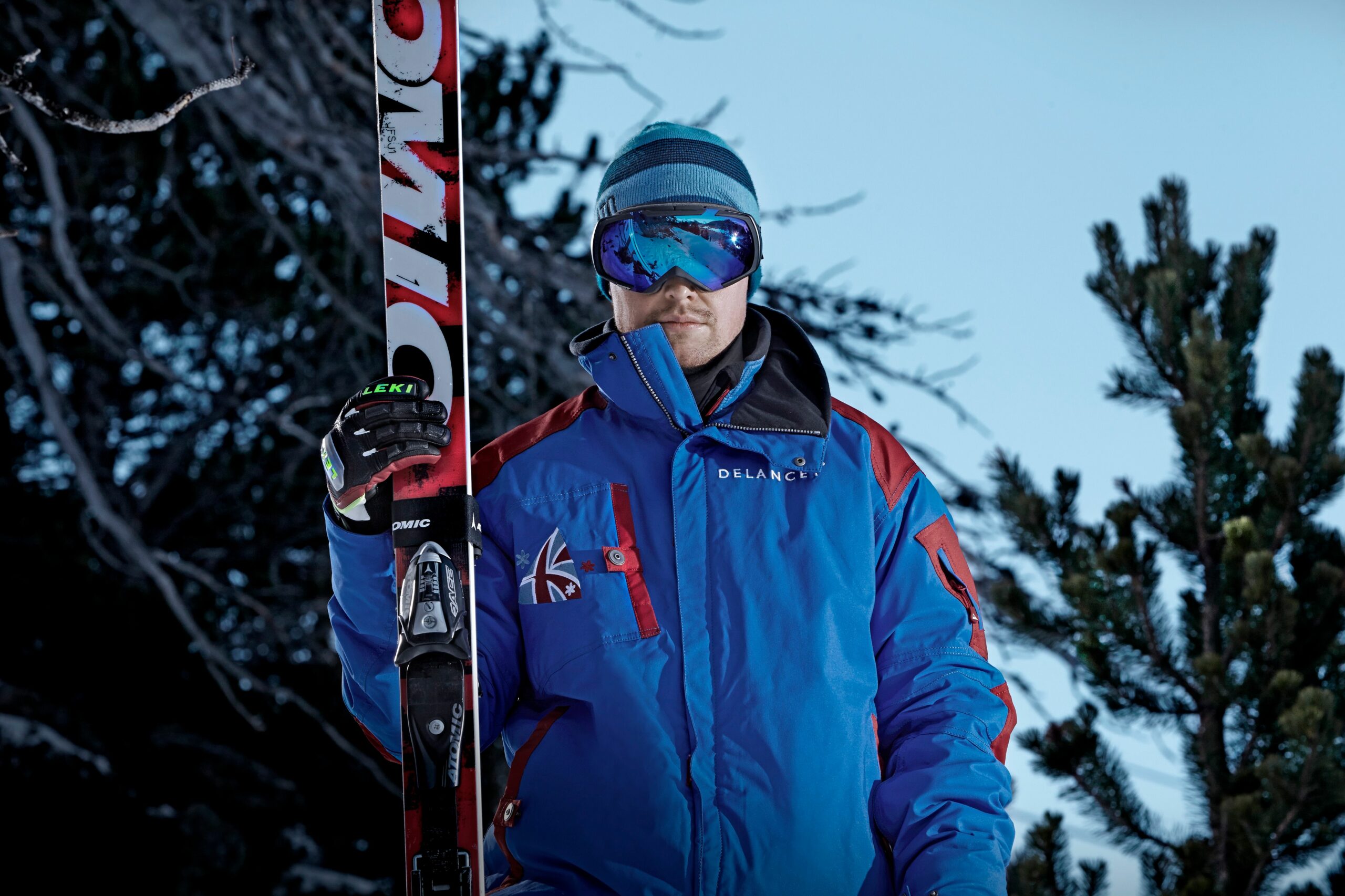15 minutes with speed demon Jan Farrell


At 0 to 60mph in 3.4 seconds, speed skiing is one of the fastest non-motorized sports on the planet. At 32, Jan Farrell is Britain’s third quickest speed skier in history and has no plans to slow down. With some hair-raising world record attempts in the pipeline, and a scientific approach to increasing his speed, Amy Marwick is keen to find out more
Jan Farrell: I first put on a pair of skis in the Lake District when I was two years old, just to be pushed around the snowy car park by my parents. I had my first lesson aged five and soon got into alpine racing (by then we had moved to Madrid and my ‘local’ slope was Grandvalira in Andorra, six hours away!). But I quickly transitioned to ski cross, which I competed in for several years.
JF: I damaged my knee in 2009, when I was 26, and realised I wasn’t going to make it in ski cross; with the knee rehab and training it was very time intensive. That’s when Andorra organised a FIS speed skiing race and so I signed up for it, got a licence and went along to compete. It was love at first sight.
JF: I had always been fascinated by the discipline and it’s always been a natural way for me to ski. For me, speed skiing is the purest form. You feel so in contact with the terrain. At high speeds everything changes, you feel every compression and every tiny bump.
JF: I was completely alone at the start, but I was allowed to train and travel to the races with the GB team from my second season. After my results that year I was accepted as part of the team.
JF: It’s normally the steepest slope you could imagine. For example Vars, which is the fastest race, has 100% gradient [that’s 45°] and a 435m vertical drop, so it’s all over in 15 seconds.
There is an even steeper one that’s half the size, in Sweden, which has a 125% gradient over 210m vertical. It’s used as a piste for the public too and I believe it’s the steepest slope on the planet. I’ve made a few turns on it – it’s pretty hairy!
JF: I was 6th in the World Cup, so there are five people I have to kill, or be faster than! My objective was 4th, and I was 10 points off. I had a crash in the middle of the season at 134mph and so my skiing wasn’t very good after that!
JF: I tripped up in the timing zone (a 100m section at the point where we achieve the highest speed – normally at the end of the steepest part of the course). I was trying to fight against the line because I was going too far left so all my weight was on my right ski. Then one ski caught the other and I was thrown up in the air and slid for about 300m on the flat.
I burnt all the way through my back protector. I had second-degree burns and haematomas, but luckily my fiancée was with me – she’s a pharmacist so she patched me up and I was able to race the next day.
JF: I had to get back on skis eventually and it was the World Cup so I had to go for it. I didn’t really realise I was scared until I watched the video of the crash. I’ve had to go back to basics, start at low speeds and build up from there.
JF: I concentrate on one thing: maybe it’s about my arms being a bit higher up or about the compression coming up. You can’t be scared. You’re basically standing at the top of a cliff and you’re going to dive down at speeds higher than free-falling. So logic is not really on your side.
I use a bit of a yoga breathing technique and have a joke around with my rivals to calm my nerves. Then I look down and I know I’m ready to go for it.
JF: Speed skiing is not difficult to do, it’s just difficult to win. It’s all about those extra 1 or 2mph and, for me, that’s the beauty of the sport. I love all the preparation and science involved. I enjoy the training. I enjoy investigating the aerodynamics and the shape of the spoilers, the materials, the wax… Alpine is just technique, technique, technique.
JF: If they like skiing fast they are going to love it! It’s relatively easy for an ex-racer or someone with a good level of skiing. It looks exotic and dangerous, and at high speeds it is risky but you work your way up to that. Starting in a place like Grandvalira, Andorra is perfect.
There are a small group of British speed skiers, but not all of them go to all the races so there’s space for younger athletes to give it a try. I’d love to share my knowledge and bring them along to races and show them what it’s all about. You also don’t have to invest as much time and money in it, and it’s compatible with another career.
JF: I was looking on the Internet to find out where the longest snow hall was and it happened to be in the north of France in Amnéville. So I emailed them saying, “I want to be the fastest non-motorised person inside a building and I think your snow hall is ideal.” They were happy for me to come and break the record, which now stands at 65.217mph.
JF: I want to better my 6th place in the World Cup and we have the World Championships this year in Sweden. Hopefully I’ll be in a position where I’m fighting for a podium place.